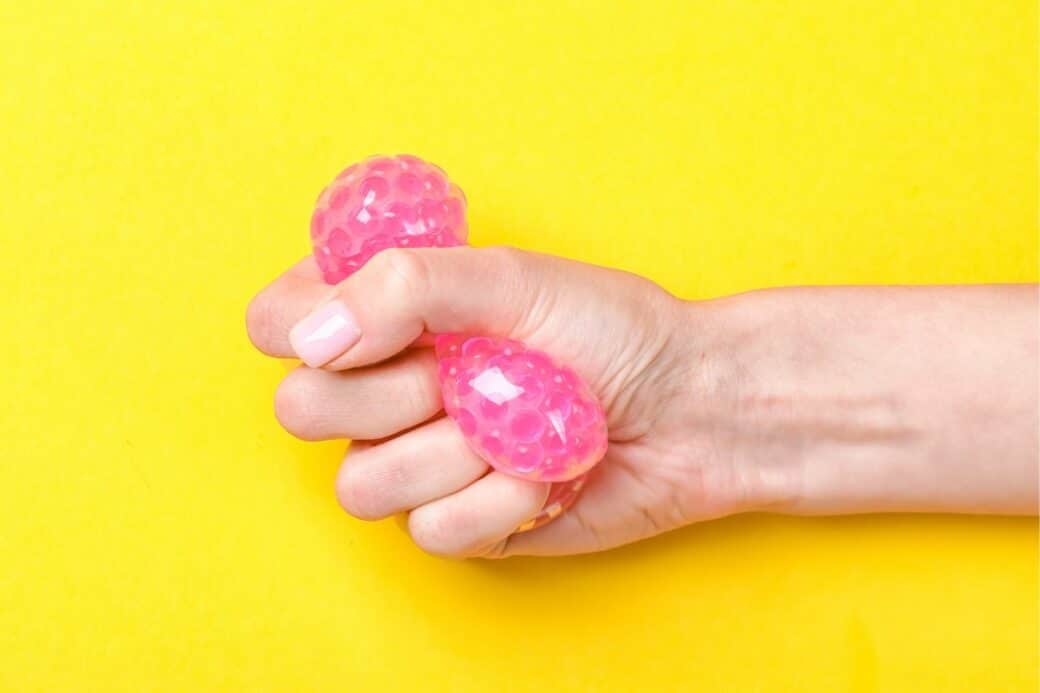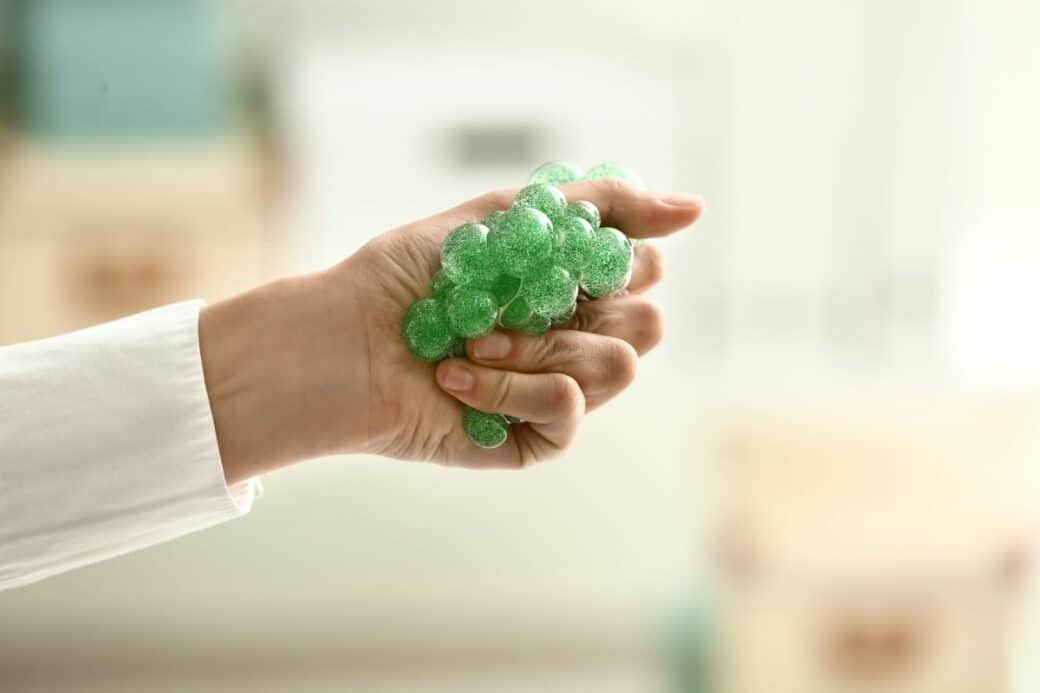Are you an eco-conscious individual who values sustainability and wants to make environmentally friendly choices? If so, then you have probably wondered about the recyclability of stress balls. In this article, we will explore whether stress balls can be recycled, providing you with valuable information to support your eco-conscious decision-making. So, grab a cup of tea, relax, and let’s dive into the world of stress ball recycling!

Can Stress Balls Be Recycled: Understanding Stress Balls
Definition and Purpose of Stress Balls
Stress balls are small, handheld objects that are designed to be squeezed or manipulated to help relieve stress and tension. They are often made of a soft, pliable material that can be easily compressed. Stress balls are commonly used as a simple and portable tool for stress relief, helping to alleviate anxiety and improve focus. They are often recommended by healthcare professionals as a form of stress management.
Different Types of Stress Balls
There are various types of stress balls available on the market, each designed to cater to different preferences and needs. The most common type is the foam stress ball, which is made of a soft and squishy foam material. Foam stress balls are lightweight and comfortable to squeeze, making them a popular choice for stress relief. Another type is the gel-filled stress ball, which contains a gel-like substance inside a flexible shell. Gel-filled stress balls provide a unique texture and sensation when squeezed, offering an alternative form of stress relief. There are also stress balls made of other materials such as rubber, latex, or even filled with rice or sand, each offering a different tactile experience.
Common Materials Used in Stress Balls
Stress balls are typically made from a variety of materials, depending on the manufacturer and product design. Some common materials used in stress balls include foam, rubber, latex, silicone, and thermoplastic elastomers. Foam stress balls are often made of polyurethane foam, a lightweight and flexible material that can easily be shaped into various sizes and designs. Rubber stress balls are made of natural or synthetic rubber, providing a durable and resilient texture. Latex stress balls are similar to rubber ones but are made from liquid latex that is molded and cured to form the desired shape. Silicone stress balls are typically made from medical-grade silicone, offering a smooth and hypoallergenic surface. Thermoplastic elastomer stress balls are made from a blend of plastics and rubber, providing a soft and stretchy feel.
Importance of Recycling
Environmental Impact of Waste
The improper disposal of waste, including stress balls, can have a significant negative impact on the environment. Stress balls, like many other products, contribute to the growing problem of waste accumulation in landfills. When stress balls and other non-recyclable materials are disposed of in regular trash, they often end up in landfills where they can take years or even centuries to decompose. During this decomposition process, they release harmful pollutants and greenhouse gases, contributing to air and water pollution and exacerbating climate change. Additionally, the manufacturing of stress balls and the extraction of raw materials contribute to deforestation, habitat destruction, and pollution.
Individual Responsibility in Recycling
Individuals have a crucial role to play in reducing waste and promoting recycling. By taking responsibility for their own waste disposal habits, individuals can make a significant impact on the environment. Recycling stress balls and other materials helps to conserve valuable resources, reduce pollution, and minimize the amount of waste sent to landfills. It is important for each individual to be mindful of their consumption habits and to actively seek out ways to recycle and properly dispose of items like stress balls.
Benefits of Recycling Materials
Recycling materials, including stress balls, offers numerous benefits to the environment and society. Firstly, recycling reduces the need for extracting and processing raw materials, which helps to conserve natural resources such as timber, minerals, and fossil fuels. Additionally, recycling reduces energy consumption and greenhouse gas emissions associated with the production of new materials. By recycling stress balls, valuable materials can be recovered and repurposed, reducing the overall demand for new materials and easing the strain on the environment. Recycling also creates jobs and stimulates the economy, as it requires a network of collection, processing, and manufacturing facilities.

The Concept of Eco-Consciousness
Definition of Eco-Consciousness
Eco-consciousness refers to the awareness and consideration of the environmental impacts of one’s actions and choices. It involves making informed decisions that prioritize the well-being of the planet and its ecosystems. Being eco-conscious means understanding that every individual’s choices have the potential to affect the environment, and consciously striving to minimize negative impacts and promote sustainable practices.
Importance of Eco-Conscious Consumer Choices
Eco-conscious consumer choices are essential in creating a sustainable future. By consciously choosing products and services that have minimal environmental impact, consumers can send a powerful message to businesses and manufacturers. When consumers demand eco-friendly alternatives and support sustainable practices, companies are incentivized to adopt greener strategies and develop more environmentally friendly products. Consumer choices have the power to drive positive change and shape the market towards more sustainable options.
How Eco-Consciousness Influences Daily Decisions
Eco-consciousness can influence daily decisions in various aspects of life. From the food we eat and the products we use to the waste we generate, there are countless opportunities to make eco-friendly choices. By opting for locally sourced and organic food, reducing water and energy consumption, using eco-friendly cleaning products, and recycling waste, individuals can incorporate eco-consciousness into their daily routines. Small changes, when multiplied across a population, can have a significant collective impact on the environment.
Can Stress Balls Be Recycled?
General Recyclability of Stress Ball Materials
The recyclability of stress balls depends on the materials they are made of. Different stress balls are constructed using various materials, and not all of them are easily recyclable. Foam stress balls, for example, are typically made of polyurethane foam, which can be challenging to recycle due to its composition and properties. Rubber stress balls, on the other hand, have a higher chance of being recycled, as rubber can be broken down and repurposed into new products.
Challenges in Recycling Stress Balls
Recycling stress balls poses several challenges, primarily due to their complex composition and the lack of dedicated recycling programs for these specific items. Stress balls often consist of a combination of materials, such as foam, rubber, or gel-filled interiors, which makes it difficult to separate and recycle each component efficiently. Additionally, stress balls are relatively small items, which can pose challenges during sorting and processing at recycling facilities.
Factors Impacting the Recyclability of Stress Balls
Several factors impact the recyclability of stress balls. The type of material used in their construction plays a significant role. Stress balls made of a single material, such as rubber, are generally more easily recyclable than those composed of multiple materials. The availability of recycling facilities and programs in a specific region also influences the recyclability of stress balls. If there are no facilities capable of handling stress ball materials, they may end up being discarded as regular trash.
Procedure for Recycling Stress Balls
Pre-assessment of the Stress Ball Material
Before recycling stress balls, it is crucial to assess the materials they are made of. This can be done by checking the product packaging or contacting the manufacturer for information about the materials used. Once the materials are identified, the appropriate recycling methods can be determined.
Process of Recycling Stress Balls
The process of recycling stress balls may vary depending on the materials involved. If the stress ball is made of a single material, such as rubber, it can be shredded or ground into small pieces that can be melted down and formed into new products. For stress balls made of multiple materials, such as foam and rubber, the materials may need to be separated manually before they can be recycled. This can be a labor-intensive process that requires specialized equipment and facilities.
Necessary Precautions in Recycling Stress Balls
When recycling stress balls, it is essential to take certain precautions to ensure safety and efficiency. If stress balls contain any hazardous materials, such as chemicals or batteries, these should be removed and disposed of properly before recycling. Additionally, stress balls should be thoroughly cleaned to remove any contaminants or residue that may interfere with the recycling process. Following the guidelines provided by recycling facilities or consulting with recycling experts can help ensure the proper handling and recycling of stress balls.
Alternative Solutions for Non-Recyclable Stress Balls
Reusing Stress Balls for Other Purposes
If stress balls are not recyclable, one alternative is to find creative ways to reuse them. Despite not being recyclable in the traditional sense, stress balls can still serve a purpose beyond their initial intended use. For instance, stress balls can be repurposed as tactile toys for pets, used as physical therapy aids, or even transformed into DIY crafts. By finding new uses for non-recyclable stress balls, their lifespan can be extended, reducing the overall waste impact.
Donating Unused Stress Balls
Another option for non-recyclable stress balls is to donate them to individuals or organizations that can put them to good use. Schools, community centers, or healthcare facilities may be interested in accepting gently used stress balls for various purposes. By donating stress balls, individuals can help others benefit from stress relief while also reducing waste.
Innovative Ideas for Non-Recyclable Stress Balls
Innovation can play a vital role in finding solutions for non-recyclable stress balls. Researchers and inventors are constantly exploring new ways to repurpose and recycle materials that are traditionally considered non-recyclable. For example, some companies have developed innovative recycling technologies that can break down and extract valuable components from complex items like stress balls. Staying informed and supporting such initiatives can contribute to a more sustainable future.
Eco-Friendly Alternatives to Stress Balls
Selecting Stress Relief Items That Are Recyclable
When searching for stress relief items, it is important to consider eco-friendly alternatives that are recyclable. Instead of traditional stress balls, individuals can choose stress relief products made from sustainable and recyclable materials, such as natural rubber or biodegradable foams. By opting for recyclable stress relief items, individuals can enjoy the benefits of stress management while minimizing their environmental impact.
Benefits of Eco-Friendly Stress Relief Alternatives
Eco-friendly stress relief alternatives offer numerous benefits. Firstly, they are made from materials that have a lower environmental impact, as they often come from renewable or sustainable sources. Additionally, eco-friendly stress relief items are designed to be recyclable, reducing waste and promoting a circular economy. Using these alternatives also sends a message to manufacturers and businesses, encouraging them to adopt eco-friendly practices and create more sustainable products.
Examples of Eco-Friendly Stress Relief Alternatives
There are various eco-friendly stress relief alternatives available today. Biodegradable stress balls made from natural rubber or compostable materials offer a sustainable option for stress relief. Fidget toys made from sustainable materials like bamboo or recycled plastics provide a reusable and environmentally friendly alternative. Additionally, stress relief techniques such as meditation, deep breathing exercises, and physical activities like yoga or walking can be effective in reducing stress without relying on physical objects.
Promoting Eco-Conscious Choices
Educating Consumers About Eco-Friendly Products
One of the most effective ways to promote eco-conscious choices is through education. By raising awareness about the environmental impact of different products and the benefits of eco-friendly alternatives, consumers can make more informed choices. Education can be provided through various channels, such as online resources, workshops, or educational campaigns. Empowered with knowledge, consumers can actively seek out and support eco-friendly products and services.
Influence of Marketing in Promoting Eco-Conscious Choices
Marketing plays a powerful role in shaping consumer behavior. By highlighting the eco-friendly features and benefits of products, companies can encourage consumers to choose more sustainable options. By using eco-friendly messaging, displaying eco-certifications, or sharing the company’s environmental initiatives, businesses can appeal to eco-conscious consumers and create a demand for greener alternatives. Effective marketing strategies can help bridge the gap between consumers’ desire for sustainable choices and the availability of eco-friendly products.
Government Initiatives to Encourage Eco-Conscious Choices
Government initiatives and policies also play a vital role in promoting eco-conscious choices. By implementing regulations that incentivize sustainable practices and encourage eco-friendly product development, governments can create an environment conducive to eco-conscious consumer behavior. Incentives such as tax breaks for companies adopting green practices or funding programs for research and development of eco-friendly technologies can significantly impact the market and consumer choices.
Impact of Recycling Stress Balls on Environment
Reduced Environmental Footprint
Recycling stress balls can significantly reduce their environmental footprint. By diverting stress balls from landfills, valuable raw materials can be recovered and reused, reducing the need for extracting and processing new materials. The energy saved through recycling also helps to reduce greenhouse gas emissions and combat climate change. Recycling stress balls contributes to a circular economy, where materials are reused and waste is minimized, leading to a more sustainable future.
Contribution to Sustainable Development
Recycling stress balls contributes to sustainable development by promoting responsible consumption and production. It helps to conserve natural resources, reduce pollution, and alleviate the strain on landfill capacities. By recycling stress balls and other items, valuable materials are kept in circulation, reducing the demand for new resources. This, in turn, helps to create a more balanced and sustainable approach to resource management.
Conserving Natural Resources
The recycling of stress balls and other materials helps to conserve natural resources. By extracting and processing fewer raw materials, natural resources such as timber, minerals, and fossil fuels are preserved. Additionally, recycling stress balls reduces the need for energy-intensive manufacturing processes, further conserving energy resources. By conserving natural resources through recycling, we can ensure their availability for future generations and promote a more sustainable and equitable world.
Conclusion: The Future of Eco-Conscious Choices
Predicted Trends in Environmental Awareness
Environmental awareness is expected to continue growing in the future. As more people become educated about the environmental impacts of their choices, there is likely to be an increased demand for eco-friendly alternatives. The trend towards eco-conscious choices is expected to expand across various industries, including the stress relief market. Consumers are increasingly seeking out products and services that align with their values and contribute to a more sustainable world.
Role of Technology in Facilitating Eco-Conscious Choices
Technology will play a pivotal role in facilitating and advancing eco-conscious choices. Innovations in recycling technologies, material sciences, and sustainable manufacturing processes will enable the recycling and repurposing of previously non-recyclable items like stress balls. Additionally, advancements in information technology and communication will enhance access to eco-friendly products, allowing consumers to make more informed choices. Technology can be a driving force in creating a more sustainable future.
Call to Action for More Eco-Conscious Consumer Behavior
In conclusion, the future of eco-conscious choices relies on the actions of individuals. Each person has the power to make a difference through their daily choices and consumption habits. By recycling stress balls and opting for eco-friendly alternatives, individuals can reduce waste, conserve resources, and contribute to a more sustainable future. By being aware of the environmental impact of our choices and actively seeking out eco-conscious options, we can foster a society that values and prioritizes the well-being of the planet. Let us embrace the opportunity to be eco-conscious consumers and work towards a greener and more sustainable world.




